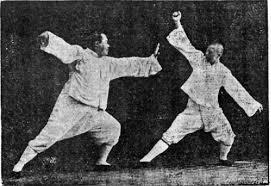
There's no shortage of advice for the over-50 set when it comes to sports and exercise. A quick tour around the web provides a wide variety of ways to stay in shape and enjoy some of your favorite recreational sports while avoiding injury. Still, while the benefits of a regular low-impact exercise routine, along with safe, sane participation in your favorite sport can't be denied, the risk of injury increases with almost all forms of exercise, as we grow older. How can you mitigate the risk of exercise or sports-related injuries in your quest to stay in the game?
The Age of Diminishing Returns
There comes a time when the old Nietzsche adage, "that which does not kill us makes us stronger," simply doesn't apply anymore. In other words, there's a fine line between maintaining an ideal state of personal fitness and actually hastening our physical collapse by pushing our aging bodies beyond their limits. Not only does the ROI of strenuous exercise decrease, but our ability to go out and do it again decreases as well. For example, three hours on the driving range at age 25 is likely to improve your golf swing, while that same three hours at age 55 is likely to turn your swing into a battle against fatigue, which may result in a complete loss of the rhythm you're trying to repeat. Knowing when your workouts and practice sessions become counter-productive is important if you want to stay in the game.
Know Your Body Now, Not Then
While it may seem obvious, if you haven't developed an intimate knowledge of your body -- it's strengths, weaknesses, and unique quirks-by the time your 50, you could be in for a world of hurt. For many of us, our 50s has been a decade of reckoning involving a parade of surgeries (of the non-plastic variety) and repairs to worn-out elbows, bum shoulders, blown-out knees, rusty hips and bad backs. Some of us may have been encouraged when our doctors said "you've got a lot of good years left in you, so let's fix that [insert body part here] now, while you're still active." And some of us have made it well beyond our fifties, and even sixties, without serious breakage.
In a world that likes binary categorizations, the truth is most bodies are some combination of somatotypes: ectomorph (tall and skinny), mesomorph (totally buff), and endomorph (short and stocky). The same sliding scale can be applied to male/female characteristics. Nonetheless, few of us were likely to take stock of our individual body types in our 20s. As a result, we may have been involved in various sports and exercise activities when we were young that we might have avoided or at least moderated had we known how dearly we would pay later.
Before you adopt one of the popular low-impact exercise routines, be it yoga, pilates, tai-chi, aquatic aerobics, stationary cycling, elliptical training etc., take stock of your body type and your condition. Should you really be doing The Plow after spinal fusion surgery? If your equilibrium has gotten shaky, is it a really a good idea to climb onto that exercise bike, that treadmill or that stairmaster? Can that repaired rotator cuff handle a half-mile of Australian crawl, or even breaststroke? Even if you think you can handle the activity, it's best to get the thumbs up from your doctor before you begin.
Adapt Your Gear
You may have decided back in your early thirties that stiff shafts and forged irons were for you, or high performance slalom skis, or Roger Federer's tennis racket, or Chris Froome's road bike, or Lelisa Desisa' running shoes. The truth is that your strength, endurance, reflexes, eyesight-all of the characteristics that enabled you to use pro-grade gear-are not what they used to be. If indeed you're in good enough shape to continue recreational sports you'll be wise to use the lighter, softer shafts, the more-forgiving skis, the lighter rackets and softball bats. As you've probably discovered, there's a senior version of everything these days. Doggedly sticking with your tried and true weapons can lead to injury and, what's worse, the unfortunate conclusion that if you can't play the game the way you used to you're not going to play at all.
It's Probably Not Tendinitis
The most common injuries over 50 are related to wear and tear of the tendons, which is often mistakenly categorized as tendinitis. Since the affliction is so commonly misdiagnosed as inflammation of the tendons, we may think we're curing the problem with NSAIDS and cortisone shots, when in fact we're simply masking the pain while exacerbating the the issue. When the tendon tears or snaps it's likely to need surgical repair and (I speak from experience) it will never be the same.
Here I must share a little anecdote: I once went to an acupuncturist hoping he could alleviate pain in my elbow. He said "show me the movement that makes it hurt." I bent my elbow. Then he said, "If it hurts when you bend your elbow, stop bending your elbow." Duh. But the truth is the only known long-term relief for tendinosis is rest. Such news is often a bitter pill in our ultra-competitive culture, but if you want to avoid complete breakage, rest is the only sure-fire cure.
Muscle strain is equally common for AARPies. The culprit in this case is the degeneration of the equilibrium, which in turn causes the muscles in the lower extremities to tighten up to compensate for lack of balance. Those warm-up and cool-down periods that were so boring in our 20s and 30s are imperative after 50. We're also more susceptible to exhaustion and heat stroke, so we have to change the mindset that we're increasing our endurance by "toughing it out," when in fact we're hastening our own demise.
Heads Up, But Don't Strain Your Neck
Of course there are some injuries that result from the fact that we're just not as quick to react as we used to be. The combination of slower cognition and slower reflexes makes it much harder to avoid various objects like skateboarders hurtling through space or red-light runners. It's also no secret that traffic accidents become more common the older we get, and while there's not much we can do to shrink reaction times, there are ways to compensate. The National Highway and Traffic Safety Administration advises older drivers to increase following distances, avoid night driving, driving alone, and even the slightest amounts of alcohol.
Even if some of us, in heeding our bodies, have replaced senior's softball, masters swimming, and 18 holes-a-day for a regular, low risk exercise routine, there's still plenty of opportunity for injury. It's no surprise that the most recommended exercises-pilates, yoga, tai chi, aquatic aerobics, elliptical trainers, stationary bikes-are in the safety of a controlled environment (except for tai chi in some cases). For those of us that tend to get lost in thought when out for a walk or a casual pedal around the park, there can be all sorts of dangers: lightning bolts, errant drones and Frisbees, potholes, trip wires, muggers, bicyclists, poisonous snakes, birds with loose bowels, the distracting shape of a young jogger, lions, tigers, bears etc. Aside from helmets and body armor, you won't find near as much online advice on how to avoid injury in the face of random cosmic interference. But acknowledging that your old grey body just ain't what it used to be is a good start.

